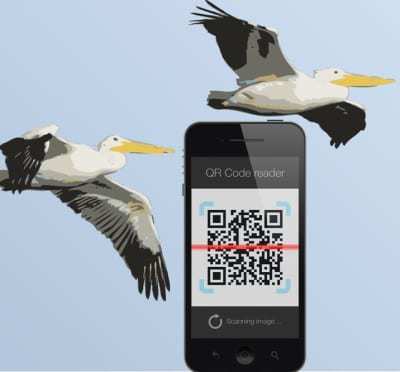Informational signs featuring quick response codes have been erected in partnership with the Pelican Island Audubon Society.
Smartphone users visiting Pelican Island National Wildlife Refuge will now be able to scan QR codes on signage in order to learn more about the various areas and types of wildlife within the refuge.
Scanning the quick response codes provides access to video, photos, and descriptions.
These QR codes and the information available through their scans has been provided in partnership with the Pelican Island Audubon Society. The island is one of that organization’s Special Places in America. It has been estimated that about 40 percent of the visitors to the island currently carry smartphones. As there are approximately 100,000 visitors each year, this means that a large number of people will be able to access the additional information beyond what is printed on the signs.
These QR codes have been designed to enhance the experience for visitors to the wildlife refuge.
 The initial idea of using the QRcode feature on the signage of the refuge in order to benefit visitors was from the PIAS First Vice President Bob Bruce, as well as PIAS board member and former Deputy Manager of PINWR, Keenan Adams.
The initial idea of using the QRcode feature on the signage of the refuge in order to benefit visitors was from the PIAS First Vice President Bob Bruce, as well as PIAS board member and former Deputy Manager of PINWR, Keenan Adams.
There was a considerable collaboration in order to come up with all of the necessary artwork, wildlife photography, videos, funding, sign manufacturing, and installation, but the “iNature Tour” signs are all now in place. Funding was provided for the signs by Audubon Florida.
Although the signs are already up, the QR codes will be officially launched in a brief inaugural ceremony that will be held by the Pelican Island National Wildlife Refuge and the Pelican Island Audubon Society on April 7. That morning, they will be demonstrating the signs for both visitors to the refuge as well as the press.
Quick response codes are rapidly becoming a regular part of the experience at many tourist locations, particularly when there is the potential for a learning experience, such as understanding the nature or the history of a place or a building. Due to the affordability of these barcodes, they are quick and easy to implement and can be kept up to date online without having to change the barcode, itself.
